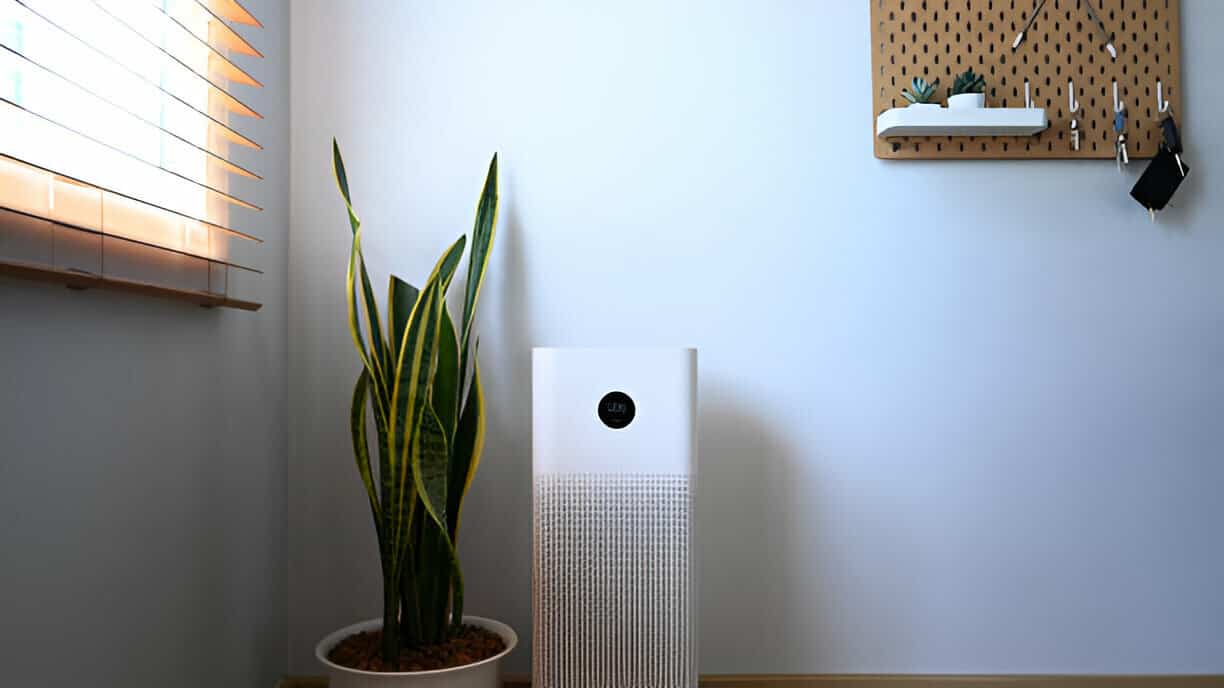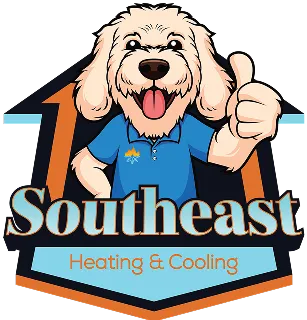
Indoor Air Quality in Sugar Hill, GA


If you’ve noticed musty odors, allergy flare-ups, or lingering dust in your home, chances are your indoor air quality is falling short. It’s time to consider a professional solution to protect your family’s health and home comfort. At Southeast Heating and Cooling LLC, we specialize in enhancing indoor air quality in Sugar Hill, GA, with certified technicians, advanced equipment, and a promise to get it right the first time—so you can breathe easier with confidence.
Understanding the Air Quality Index (AQI)
Indoor air might be invisible, but its effects are not—and the Air Quality Index (AQI) helps us understand just how healthy (or unhealthy) the air really is. While the AQI is often associated with outdoor pollution levels, it also offers valuable insight for managing indoor spaces.
Here’s a breakdown of how AQI works:
- AQI Levels Range from 0 to 500: The Air Quality Index (AQI) measures how clean or polluted the air is, ranging from 0 (excellent) to 500 (hazardous). The lower the score, the cleaner the air. Levels under 50 are safe for everyone, but anything over 100 poses risks, especially for sensitive groups like children, the elderly, or those with conditions like asthma.
- Color Codes Make It Easy to Understand: AQI is represented by a color-coded system for simplicity. Green indicates good air quality, yellow means moderate conditions where caution may be needed, and red signals poor air quality with health risks for many, particularly vulnerable groups. Additional colors like orange, purple, and maroon show increasing danger levels.
- Indoor AQI Considerations: While outdoor air quality receives more attention, indoor air can also be polluted. Sources like pet dander, cooking fumes, cleaning chemicals, or poor ventilation can raise indoor AQI levels even when outdoor air seems clear.
- Smart Devices Can Track AQI Indoors: Technology makes tracking AQI easy. Smart air quality monitors provide real-time AQI scores for your home, identifying issues like high particulate matter or pollutants. They also suggest improvements, like using air purifiers or improving ventilation.
Understanding your AQI puts you in control, giving you the power to take action before pollutants affect your well-being.

Identifying Signs of Poor Indoor Air Quality
You don’t need lab tests to know when something’s off in your home’s air. Your body and surroundings usually give some pretty clear signals. Here are some of the most common red flags:
- Frequent Allergies or Respiratory Issues: If you or your family members constantly sneeze, cough, or experience nasal congestion, it could be a sign of airborne irritants like dust, mold, or pollen circulating in your home. These irritants can worsen allergy symptoms or even trigger respiratory problems in the long term.
- Visible Dust Buildup: Do you feel like no matter how often you dust, there’s always a layer of dirt settling on your furniture? This could mean your HVAC system isn’t filtering air effectively, allowing dust to circulate through your home continuously. Over time, this can also strain your system and decrease its efficiency.
- Musty or Stale Odors: Persistent unpleasant smells, like musty or stale odors, may indicate hidden mold or mildew growth in your home. These odors are often a result of poor ventilation or damp areas that haven’t dried properly, creating the perfect environment for mold to thrive.
- Dry Skin and Irritated Eyes: If you’ve noticed your skin feeling unusually dry or your eyes constantly irritated, poor air quality might be to blame. Low humidity levels combined with airborne particles like dust can strip moisture from your skin and irritate sensitive membranes.
- Condensation on Windows: Excess indoor humidity often leads to visible condensation on windows, especially during colder months. This buildup of moisture not only fogs up the glass but can also create conditions for mold to grow on window frames, walls, and other indoor surfaces, potentially damaging your home.
These subtle symptoms can quietly chip away at your comfort and health—so when they start showing up, it’s time to call in the pros.
Indoor Air Quality Monitoring: Tools and Techniques
Keeping tabs on your air quality doesn’t require fancy science degrees—just the right tools and a little know-how. Here's how homeowners can stay in the loop:
- Digital Air Quality Monitors: These advanced devices measure a range of air pollutants, including particulate matter (PM2.5), volatile organic compounds (VOCs), carbon dioxide, and other harmful substances. They provide real-time data to help you understand and improve your indoor air quality. Some models even integrate with smart home systems for seamless monitoring and alerts.
- Humidity Meters (Hygrometers): Keeping your home's humidity levels in the 30% to 50% range is key to creating a healthy living space. Excess moisture can lead to mold and dust mites, while overly dry air may cause irritation and discomfort. A hygrometer helps you monitor and control humidity levels, ensuring a balanced and comfortable indoor space.
- Carbon Monoxide Detectors: Carbon monoxide is an odorless, colorless gas that can be deadly if undetected. These detectors are crucial, especially if you use gas appliances like stoves, heaters, or fireplaces. They provide an extra layer of safety by continuously monitoring your home for dangerous CO levels and alerting you immediately in case of a leak.
- Smart HVAC Systems: Modern HVAC systems don't just control temperature—they actively improve air quality. Equipped with sensors and self-regulating features, these systems can monitor pollutants, adjust airflow, and maintain optimal conditions automatically. Some models even connect to mobile apps, allowing you to track and manage your indoor environment remotely.
Monitoring empowers you to take targeted steps to clean the air—and avoid playing the guessing game with your health.
The Role of Ventilation in Maintaining Indoor Air Quality
Ventilation is the unsung hero of clean indoor air. Without proper airflow, indoor pollutants—like pet dander, cooking fumes, and cleaning chemicals—get trapped inside, creating a stale, unhealthy environment. In homes that are tightly sealed for energy efficiency, it becomes even more critical to allow fresh air in and push contaminated air out.
Balanced ventilation systems (like ERVs and HRVs) bring in filtered outdoor air while exhausting indoor pollutants, helping to maintain consistent, healthy airflow year-round. At Southeast Heating and Cooling LLC, we can assess your home’s current ventilation and recommend upgrades or maintenance that maximize air circulation without sacrificing energy savings.
Common Myths About Indoor Air Quality
There's a lot of misinformation floating around—let's clear the air on a few popular myths:
Myth: “If my air smells fine, it must be clean.”
Fact: Many harmful pollutants, like carbon monoxide or VOCs, are odorless.
Myth: “Air purifiers alone solve everything.”
Fact: Purifiers help, but they’re just one part of the solution. Ventilation, humidity control, and filtration are also essential.
Myth: “New homes have better air quality.”
Fact: Newer homes are more airtight, which saves energy but can trap pollutants inside.
Myth: “Plants clean the air.”
Fact: While nice to look at, houseplants don’t significantly reduce serious pollutants.
Understanding what’s true (and what’s not) helps you make smarter decisions about how to protect your family and improve your home’s air quality.
The Importance of Financial Emergency Funds
Investing in indoor air quality can feel like a luxury—until an emergency strikes. That’s when a financial cushion makes all the difference. Whether it’s a sudden breakdown of your HVAC system or a dangerous mold discovery, having an emergency fund ensures you can act fast without derailing your finances.
At Southeast Heating and Cooling LLC, we know that indoor comfort and health shouldn’t wait. That’s why we also offer financing through Service Finance Company, LLC—to help you get the services you need, when you need them, without the financial strain.
Find the Right IAQ Solution for Your Home With Our Experts
Your home should be the place where you feel safest—and that starts with the air you breathe. Our experts at Southeast Heating and Cooling LLC are ready to help you customize the perfect solution for cleaner, healthier indoor air. Whether it’s filtration upgrades, humidity control, or ventilation improvements, we’ll guide you every step of the way. If you're looking to enhance your indoor air quality in Sugar Hill, GA, contact us today to schedule a professional consultation and start experiencing healthier air by tomorrow.
Contact Us Today for Indoor Air Quality Services in Sugar Hill, GA






